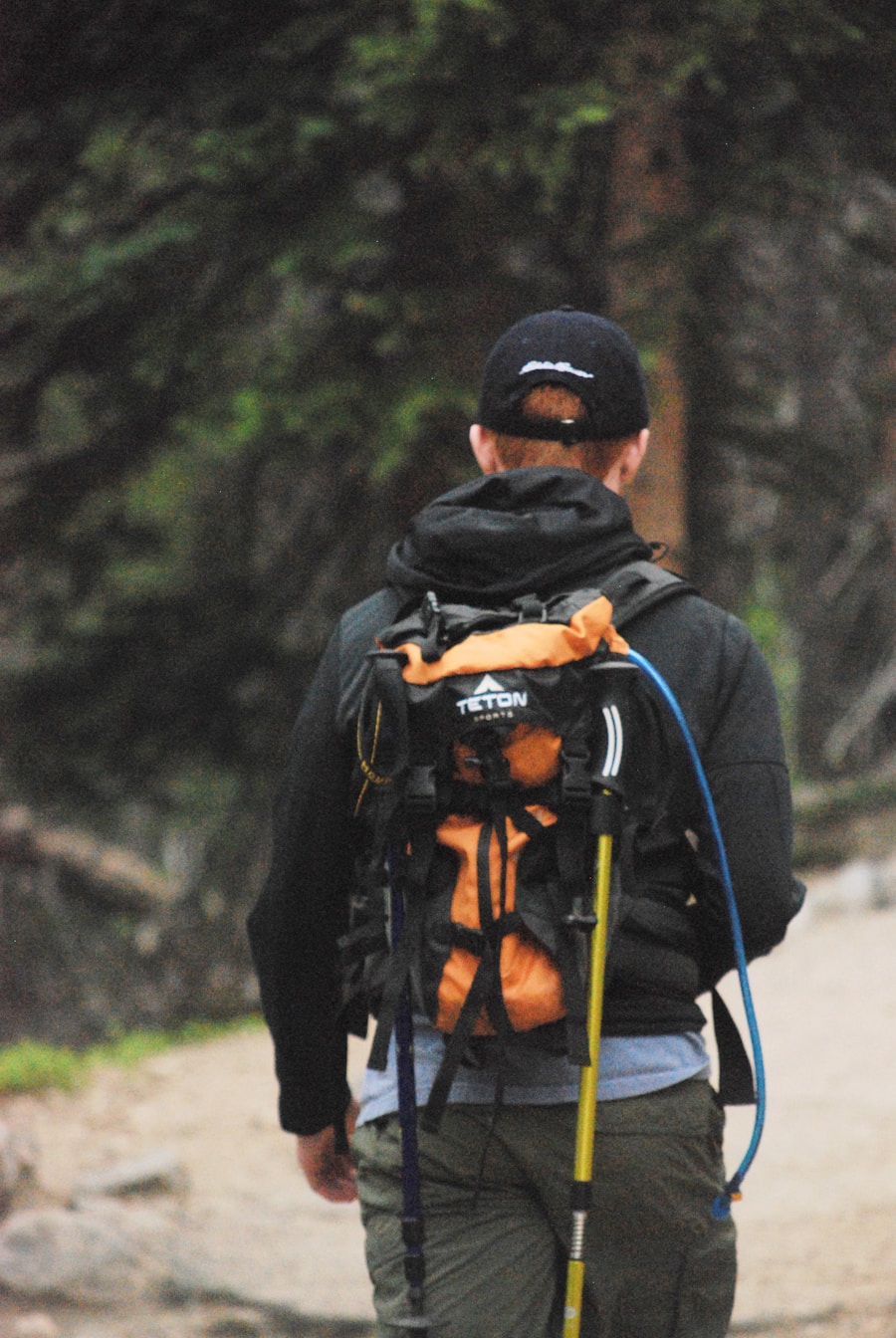When embarking on a hiking adventure, the first step is to establish realistic goals that align with your experience level, physical condition, and the time you have available. Setting these goals is crucial not only for your enjoyment but also for your safety. For instance, if you are a novice hiker, it would be unwise to aim for a strenuous multi-day trek in rugged terrain.
Instead, consider starting with shorter, well-marked trails that offer a manageable challenge. This approach allows you to build confidence and stamina while enjoying the beauty of nature without overwhelming yourself. Moreover, it’s essential to consider the environmental conditions and your personal limitations when setting these goals.
Factors such as weather, altitude, and trail conditions can significantly impact your hiking experience. For example, if you plan to hike in a mountainous region during the rainy season, it’s prudent to adjust your expectations accordingly. Perhaps you might choose a less ambitious route or opt for a day hike instead of an overnight excursion.
By setting achievable goals, you not only enhance your hiking experience but also reduce the risk of injury and fatigue.
Key Takeaways
- Setting realistic goals is important for a successful hike, consider your fitness level and experience before choosing a trail.
- Choosing the right trail involves researching the difficulty level, distance, and terrain to ensure it matches your abilities and goals.
- Essential gear and clothing include sturdy hiking boots, weather-appropriate clothing, a backpack with essentials like water, snacks, and a first aid kit.
- Proper hydration and nutrition are crucial for a successful hike, bring plenty of water and high-energy snacks to keep you fueled.
- Warm-up exercises before hitting the trail can help prevent injuries and prepare your body for the physical activity.
Choosing the Right Trail
Trails for Newcomers
Well-maintained and clearly marked trails are perfect for beginners. These trails often feature gentle inclines and provide ample opportunities for rest stops, making them ideal for those still acclimating to outdoor activities. Websites and apps dedicated to hiking often provide detailed descriptions of trails, including difficulty ratings, elevation changes, and user reviews, which can be invaluable in making an informed choice.
Trails for Experienced Hikers
For more experienced hikers, the options expand significantly. You might seek out trails that offer more challenging terrain or unique natural features, such as waterfalls or panoramic views. However, it’s crucial to research these trails thoroughly. Understanding the trail’s length, elevation gain, and potential hazards can help you prepare adequately.
Additional Considerations
Additionally, consider the time of year; some trails may be inaccessible due to snow or mud during certain seasons. By carefully selecting a trail that aligns with your abilities and interests, you set the stage for a rewarding hiking experience.
Essential Gear and Clothing

The right gear and clothing can make or break a hiking trip. Investing in high-quality equipment tailored to your specific needs is essential for both comfort and safety on the trail. Footwear is perhaps the most critical component; sturdy hiking boots or shoes with good traction can prevent slips and blisters.
When selecting footwear, consider the terrain you’ll be traversing—waterproof options are ideal for wet conditions, while breathable materials are better suited for warmer climates. In addition to footwear, layering your clothing is vital for adapting to changing weather conditions throughout your hike. Start with moisture-wicking base layers that keep sweat away from your skin, followed by insulating layers for warmth if needed.
A waterproof and windproof outer layer is essential for protection against rain or wind. Accessories such as hats, gloves, and sunglasses should not be overlooked; they can provide additional comfort and protection from the elements. Furthermore, carrying a well-stocked backpack with essentials like a first-aid kit, navigation tools, and emergency supplies ensures you are prepared for any situation that may arise.
Proper Hydration and Nutrition
| Metrics | Recommendation |
|---|---|
| Daily Water Intake | Approximately 3.7 liters for men and 2.7 liters for women |
| Recommended Fruit and Vegetable Servings | At least 5 servings per day |
| Protein Intake | 0.8 grams per kilogram of body weight |
| Recommended Fiber Intake | 25 grams for women and 38 grams for men |
| Healthy Fat Intake | Around 20-35% of total daily calories |
Hydration and nutrition play pivotal roles in maintaining energy levels during a hike. Dehydration can lead to fatigue, dizziness, and even serious health issues, so it’s crucial to drink water regularly throughout your trek. A general guideline is to consume about half a liter of water per hour of moderate activity; however, this can vary based on factors such as temperature and individual sweat rates.
Carrying a hydration system or water bottles that are easily accessible will encourage you to drink more frequently. In terms of nutrition, packing lightweight snacks that provide sustained energy is key. Foods rich in carbohydrates, such as granola bars or trail mix containing nuts and dried fruits, are excellent choices.
They offer quick energy boosts while also being easy to carry. For longer hikes, consider packing more substantial meals like sandwiches or wraps that include protein sources such as turkey or hummus. Planning your meals ahead of time ensures you have enough fuel to keep you energized throughout your journey.
Warm-Up Exercises
Before hitting the trail, engaging in warm-up exercises is essential for preparing your body for physical activity. These exercises help increase blood flow to your muscles, improve flexibility, and reduce the risk of injury. A simple warm-up routine can include dynamic stretches such as leg swings, arm circles, and torso twists.
These movements not only loosen up your muscles but also enhance your range of motion. In addition to dynamic stretching, incorporating light aerobic activities can further prepare your body for hiking. A brisk walk or a few minutes of jogging in place can elevate your heart rate and get your blood pumping.
This preparation is particularly important if you plan to tackle steep inclines or challenging terrain during your hike. By taking the time to warm up properly, you set yourself up for a more enjoyable experience on the trail.
Pacing Yourself

Pacing is a critical aspect of hiking that can significantly affect your overall experience. It’s easy to get caught up in the excitement of being outdoors and start off too quickly; however, maintaining a steady pace is essential for endurance over longer distances. A good rule of thumb is to adopt a pace that allows you to hold a conversation without becoming overly breathless.
This approach not only conserves energy but also helps you enjoy the scenery along the way. Monitoring your pace also involves being mindful of breaks. Regular rest stops are important for hydration and nutrition but also provide an opportunity to appreciate your surroundings.
When hiking uphill or on challenging terrain, it may be beneficial to take shorter breaks more frequently rather than pushing through until exhaustion sets in. Listening to your body is key; if you feel fatigued or strained, it’s wise to slow down or take a break rather than risk injury.
Safety Precautions
Safety should always be a top priority when hiking in any environment. Familiarizing yourself with the area where you plan to hike is crucial; this includes understanding potential hazards such as wildlife encounters or unstable terrain. Carrying a map or using GPS technology can help ensure you stay on track and avoid getting lost in unfamiliar territory.
Additionally, informing someone about your hiking plans—such as your intended route and expected return time—can be invaluable in case of emergencies. Another important safety measure is being prepared for changing weather conditions. Always check the forecast before heading out and be ready for sudden shifts in weather by carrying appropriate gear such as rain jackets or extra layers.
It’s also wise to pack a basic first-aid kit that includes items like band-aids, antiseptic wipes, and pain relievers. Being equipped with knowledge about basic first-aid procedures can make a significant difference in case of an injury on the trail.
Post-Hike Recovery
After completing a hike, taking time for recovery is essential for preventing soreness and ensuring overall well-being. Engaging in cool-down exercises helps gradually lower your heart rate and stretch out muscles that may have tightened during the hike. Gentle stretches focusing on major muscle groups used during hiking—such as hamstrings, quadriceps, and calves—can alleviate tension and promote flexibility.
Nutrition plays a vital role in post-hike recovery as well; consuming a balanced meal rich in protein and carbohydrates within an hour after finishing can aid muscle repair and replenish energy stores. Hydration should continue after the hike; drinking water or electrolyte-rich beverages helps restore fluids lost during physical activity. Additionally, consider taking time to reflect on your experience—journaling about what you enjoyed or learned during the hike can enhance future outings by helping you identify areas for improvement or new goals to pursue on your next adventure in nature.
If you are looking to start hiking but are feeling out of shape, you may want to check out this article on finding housing as a travel nurse. This article provides tips and resources for travel nurses who are looking for temporary housing options while on assignment. Just like starting a new hiking routine, finding suitable housing as a travel nurse can be a daunting task, but with the right guidance and resources, it can be a smooth process.
FAQs
What is hiking?
Hiking is a form of outdoor activity that involves walking on trails or paths in natural environments such as mountains, forests, and parks.
How can I start hiking when I am out of shape?
Starting hiking when out of shape can be challenging, but it is possible with the right approach. Begin with short, easy trails and gradually increase the distance and difficulty as your fitness improves. It’s important to listen to your body and take breaks as needed.
What are some tips for hiking when out of shape?
Some tips for hiking when out of shape include choosing appropriate trails, wearing comfortable and supportive footwear, staying hydrated, and bringing snacks for energy. It’s also important to warm up before starting the hike and to stretch afterwards.
How can I improve my fitness for hiking?
Improving fitness for hiking can be achieved through regular exercise such as walking, cycling, and strength training. Building endurance and strength in the legs, core, and upper body will help prepare you for longer and more challenging hikes.
What should I bring on a hike when out of shape?
When hiking while out of shape, it’s important to bring essentials such as water, a map, sunscreen, insect repellent, a first aid kit, and appropriate clothing for the weather. Snacks and a fully charged phone can also be helpful.
